‘Best a human can be’: indigenous Amazonian Karapiru dies of Covid
Karapiru Awa Guaja, among the last of the hunter-gatherer Awa tribe, survived a massacre and a decade alone in the forest, inspiring others with his resilience and ‘extraordinary warmth’
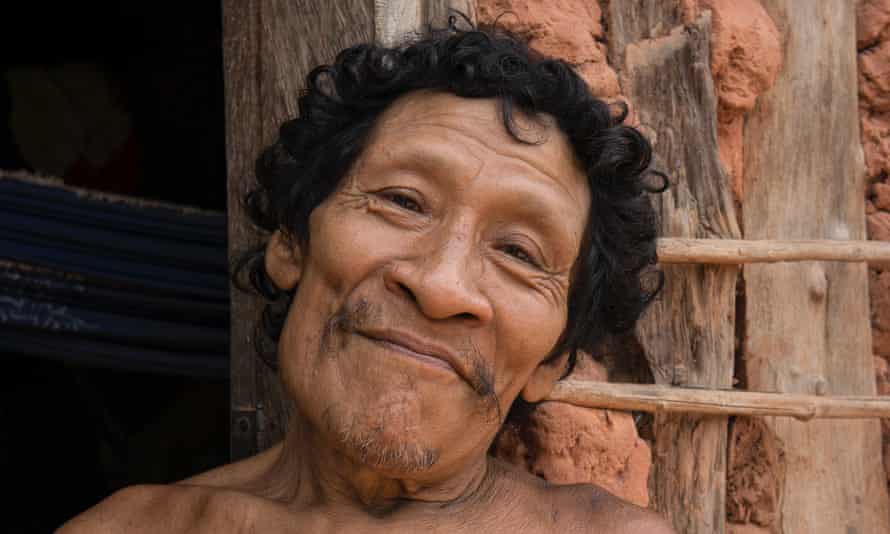
He survived a massacre that killed most of his family in the Brazilian Amazon and lived for 10 years alone in the forest, but Karapiru Awa Guaja could not escape the pandemic.
Karapiru, one of the last of the hunter-gatherer nomadic Awa of Maranhao state, died of Covid-19 earlier this month. With only 300 Awa thought to remain, they have been called the “earth’s most threatened tribe”.
In the 1970s, Karapiru lost almost everyone he knew in a genocidal attack on his tribe by settlers. His wife, daughter, siblings and other family members were killed, and he was shot in the back. But his resilience became a source of inspiration for activists working to protect indigenous and uncontacted peoples.
Pictures capture his broad smile, but not the scale of troubles he had in life.
Survival International, a group working for the rights of indigenous people, describes Karapiru’s “extraordinary warmth and kindness”.
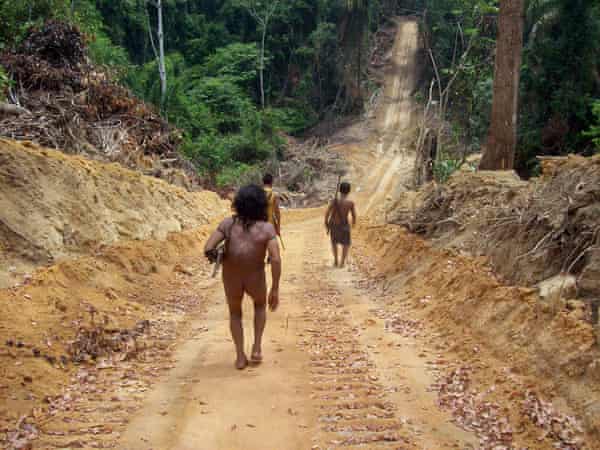
Awa lands have been under attack since the discovery of iron ore in the late 1960s. The 2km long trains on a 900km railway built through the forest in the 1980s pass just metres from Awa territory on their way to one of the world’s largest iron ore mines. The scale of the mining development gouged from the Amazon is such that it can be seen from space.
Skilled archers, the Awa live scattered in family groups over a large area, and travel at night using torches made from tree resin. Many have had no contact with the outside world.
Karapiru was estimated to be 75 when he died. The Indigenist Missionary Council (CIMI), a Catholic NGO working with indigenous peoples, reported his death as “a victim of Covid-19”, despite him having had the Covid vaccine.
He died in a hospital in Santa Ines in Maranhao and was buried in the municipality of Ze Doca, against the wishes of his friends, who wanted to bury him on Awa land.
Marina Magalhaes, a linguist studying the Awa language, became friends with Karapiru after they met in 2001.
Magalhaes says Karapiru’s relatives told her he had gone to another village in the months before his death to visit his son, Tamata. When he returned to Tiracambu, the village was protesting against a government bill that limited the demarcation of new indigenous land. Villagers believed it was safe to meet during the protests, including with people from other ethnicities, because they had been vaccinated. In Tiracambu alone, at least 12 Awas tested positive for Covid after the protests.
“He was one of the kindest people I’ve ever met. He liked to hug people, which is not a common Awa attitude towards non-indigenous people, and he often watched my work with other Awa from a distance, always smiling when I looked at him,” says Magalhaes.
“Karapiru, in my view, represents the best that a human being can become, due to his friendliness and tranquility. Also, an example of how resilient we can be in the most extreme situations.”
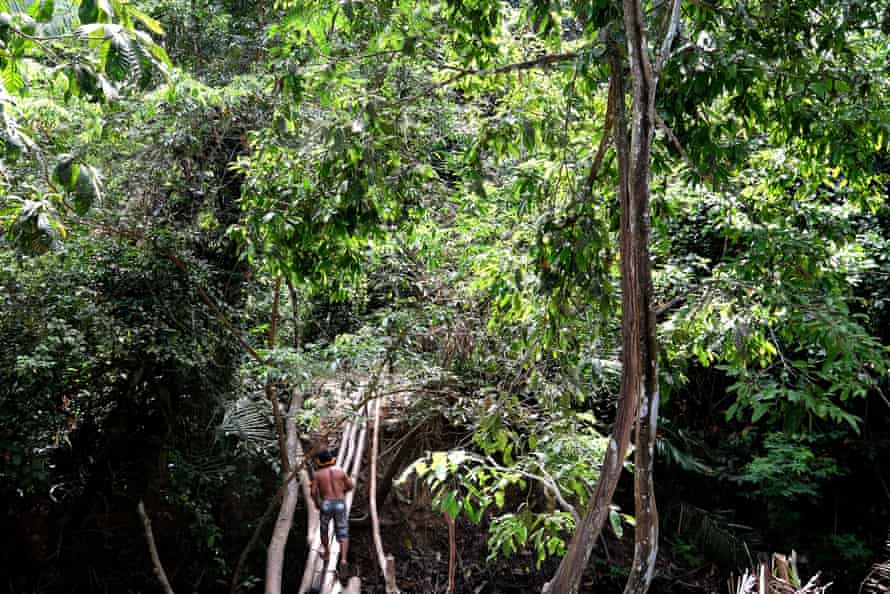
Fiona Watson, research director at Survival International, first met Karapiru in 1992.
“I just thought I cannot believe this man survived on his own for 10 years, not speaking to anybody,” she says. “He spoke so quietly, he whispered, that really struck me because I thought, of course, he’s had to become invisible in order to survive.
“He started talking and smiling, and I thought how is he not more traumatised? He knew I wasn’t [an enemy], he had no rancour, no bitterness. That astounded me. That magnanimity. What an extraordinary human being, to be able to sort of forgive people in a way and to be able to carry on your life.”
Karapiru’s life was the subject of an award-winning documentary in 2006, by the Italian-born director Andrea Tonacci, called Serras da Desordem.
Madalena Borges from CIMI also knew him well. “Karapiru was full of peace, without malice, smiling, very friendly, receptive to everyone, soft-spoken. A great sage of ancestral knowledge about Awa. Very skilled in the art of hunting and fishing, he went out daily in search of food for his family,” she says.
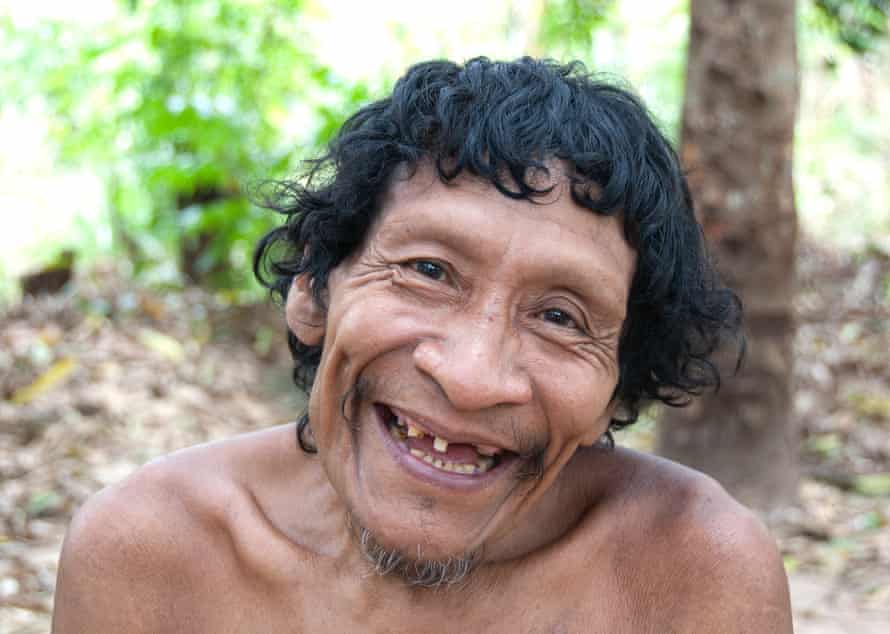
Since the iron ore infrastructure opened up forests to loggers and farmers, the Awa people have seen their forests shrink as land is cleared for cattle. The noise of chainsaws and trucks has emptied the forest of monkeys, peccaries and tapirs.
“To the settlers, the Awa were an obstacle, a primitive nuisance, and they killed the Awa in large numbers,” according to Survival International. On one occasion poisoned flour was left for Awa to eat.
After the massacre, Karapiru spent 10 years alone, eating honey, small birds and sleeping in the boughs of copaiba trees and among the orchids.
“I hid in the forest and escaped from the white people. They killed my mother, my brothers and sisters and my wife,” he told Survival International.
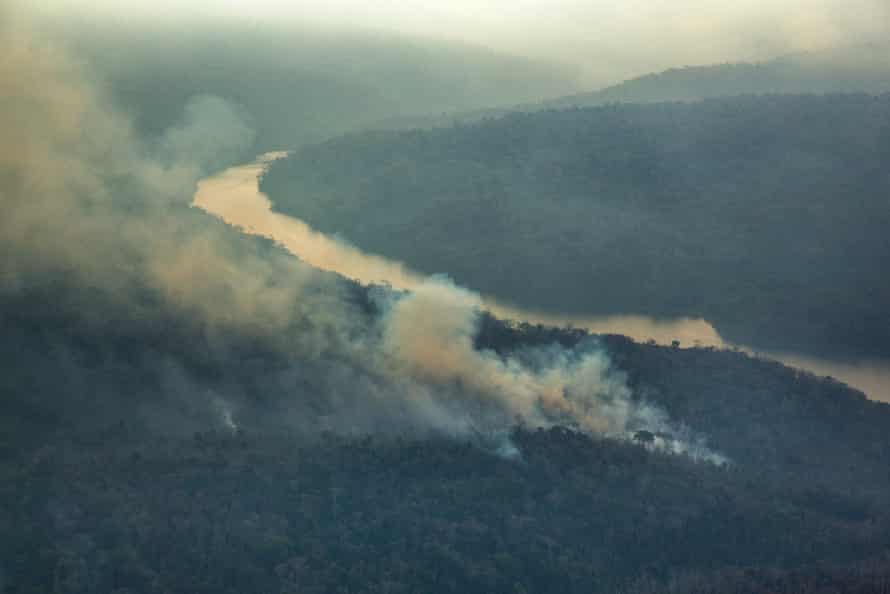
“When I was shot during the massacre, I suffered a great deal because I couldn’t put any medicine on my back. I couldn’t see the wound: it was amazing that I escaped – it was through the Tupa [spirit]. I spent a long time in the forest, hungry and being chased by ranchers. I was always running away, on my own. I had no family to help me, to talk to. So I went deeper and deeper into the forest.”
He walked 400 miles to Bahia state where he was given shelter by a farmer despite not being able to communicate with him.
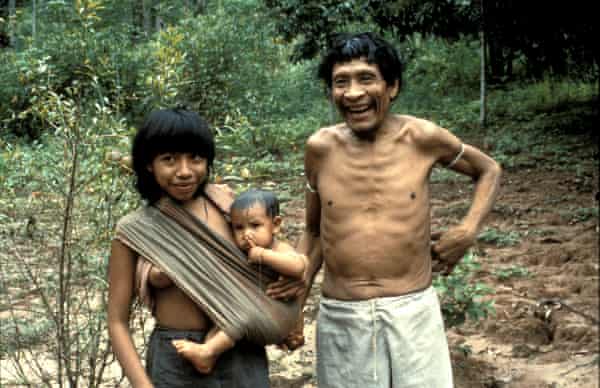
Living on the farm he tried manioc, rice, flour and coffee for the first time. “It was tasty. I had more and more – it is good,” he later said.
Authorities and anthropologists tried various ways to speak with him but to no avail. However when a young Awa man called Xiramuku was brought in to see if he could communicate with him, it turned out he was Karapiru’s son, who had also survived the massacre.
The pair moved to Tiracambu, a mountain village in Maranhao, home to an Awa community.
Karapiru remarried and began fighting for the rights of his people, opposing the anti-indigenous policies of Brazil’s president, Jair Bolsonaro, appearing at demonstrations with his bow and arrows, vulture and toucan feathers.
In an interview, Karapiru said: “There are times when I don’t like to remember all that happened to me. I hope the same things that happened to me won’t happen to my daughter. I hope she will eat lots of game, lots of fish, and grow up to be healthy. I hope it won’t be like in my time.”
Watson took a picture of him and his new wife, Marimia, with their baby daughter in 2000.
“I thought he has hope, he had this incredible positivity, he had a lot of charisma. I thought it was wonderful that he was planning his future, marrying again, and not just surviving but wanting to live well,” she says.
In 2014, the Brazilian government sent helicopters and squads of police to remove illegal settlers. But farmers and loggers are back, emboldened by Bolsonaro’s policies.

